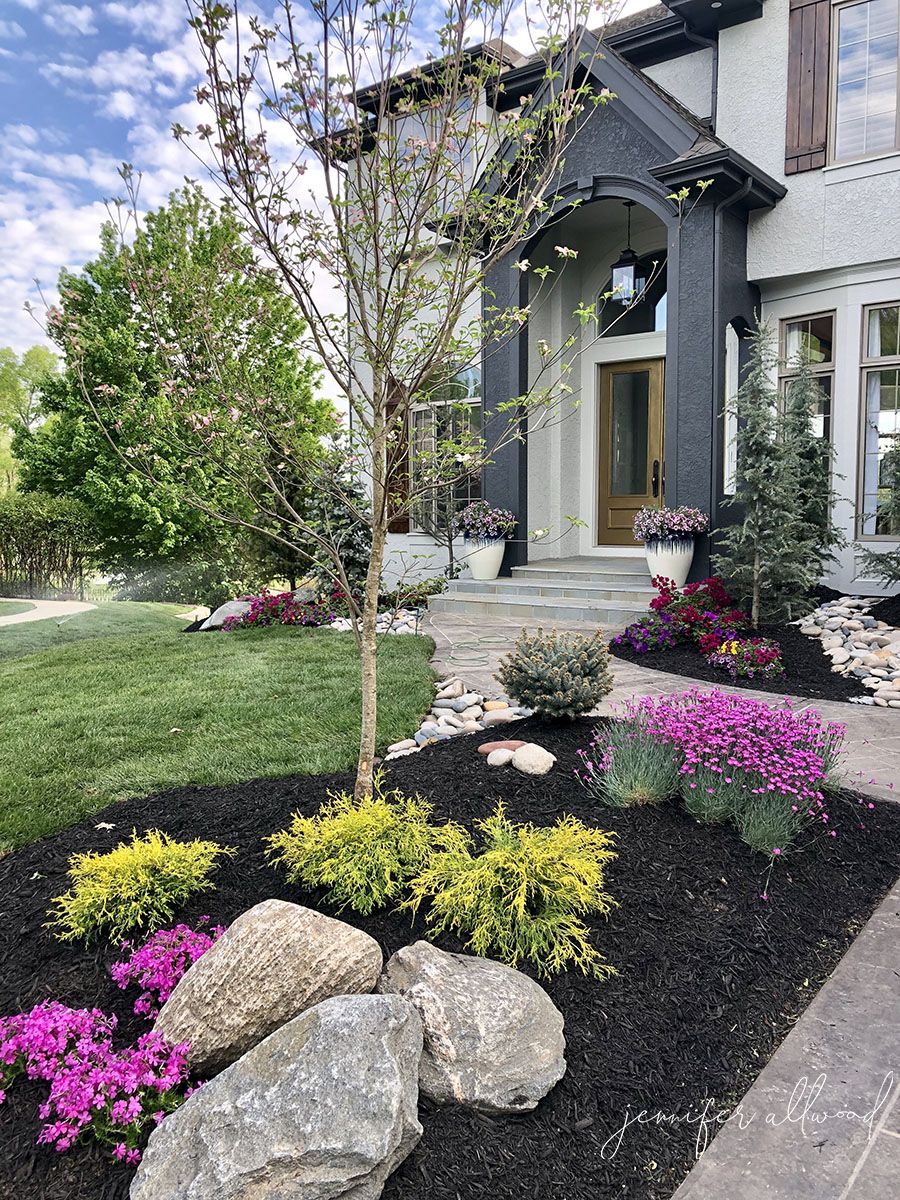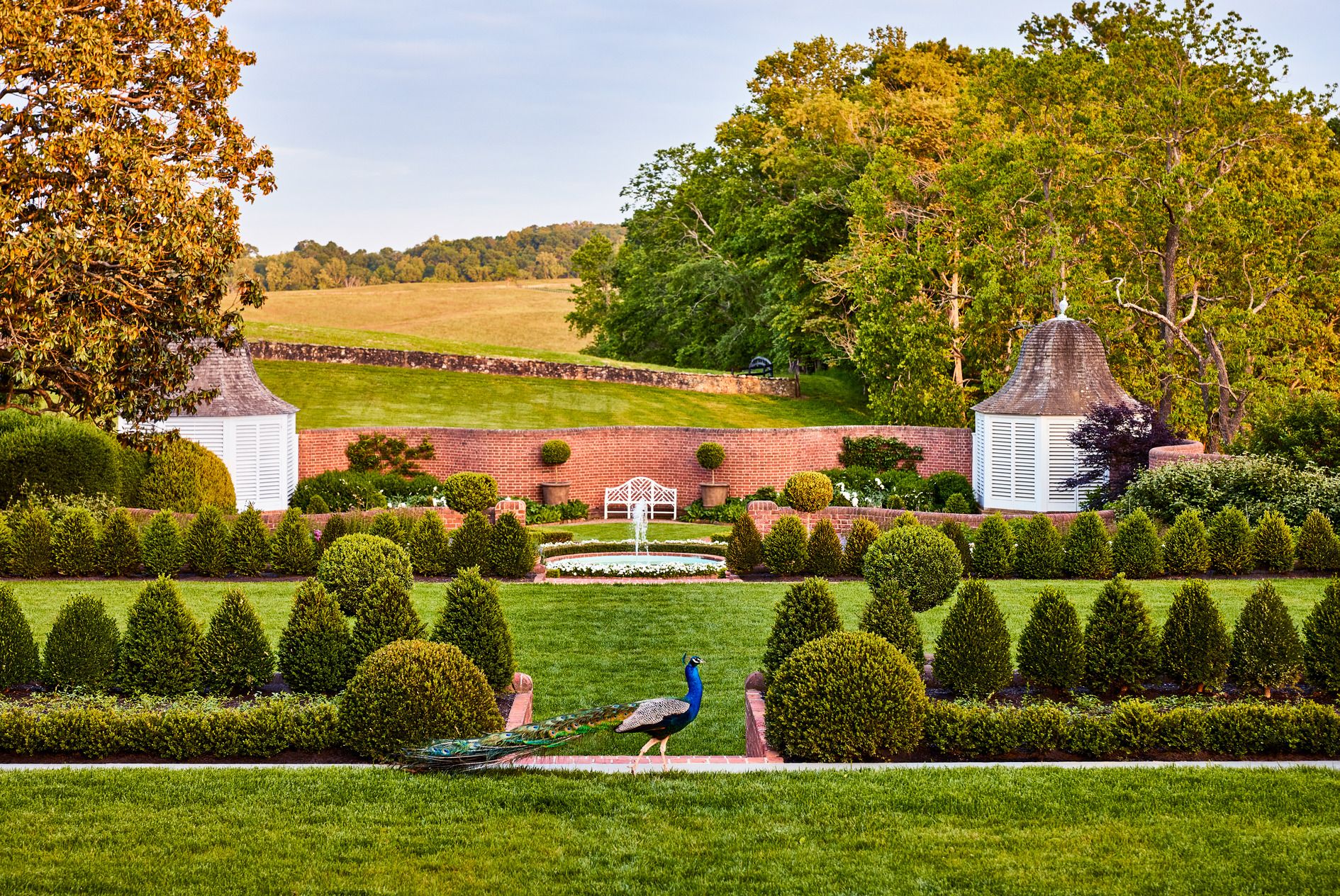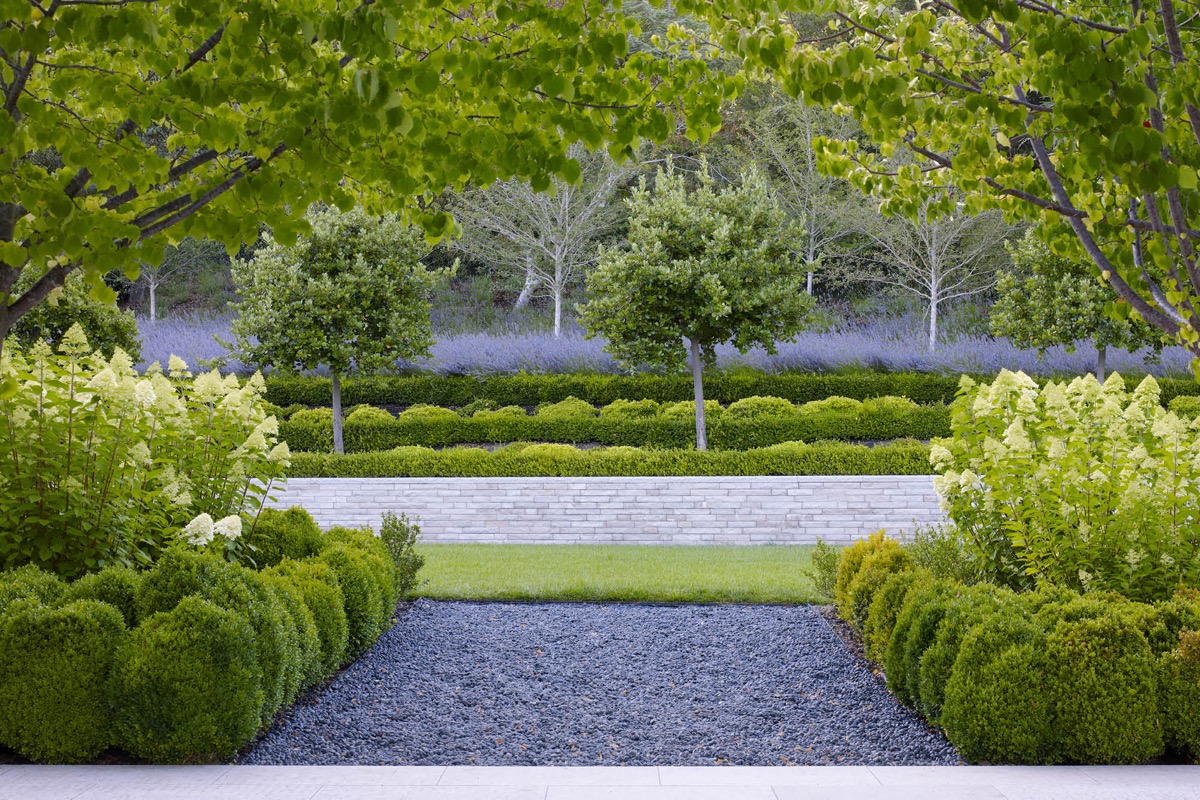BBQ Island Installation Concepts That Blend Aesthetics and Performance
Discovering Different Sorts Of Landscaping to Enhance Your Outdoor Atmosphere
Landscape design plays an important function in specifying outdoor areas. Various styles, from conventional gardens to modern minimal layouts, offer distinct advantages for improving visual appeals and feature. Integrating elements like xeriscaping and indigenous plants can contribute to environmental equilibrium. Understanding the interplay of hardscape and softscape is important for producing welcoming settings. The options available can be frustrating, triggering one to mirror on which design best straightens with their vision for an outside refuge.
Traditional Yard Landscape Design

While several contemporary gardens welcome minimalism and indigenous plantings, conventional garden landscape design remains a cherished approach that stresses balance, structure, and ornamental functions. This style frequently incorporates official geometric layouts, where hedges, pathways, and flowerbeds are set up with precision. Central focal factors, such as sculptures or fountains, attract the eye and offer a feeling of harmony.Traditional landscaping often includes a selection of plant kinds, showcasing seasonal blooms and evergreen elements. Classic shrubs, perennials, and annuals produce vivid colors and appearances throughout the year. Furthermore, arches, pergolas, and trellises add upright rate of interest and act as assistance for climbing plants, improving the general aesthetic.The use all-natural materials, such as rock and wood, additional improves the typical landscape, adding to a classic quality. Ultimately, this design invites leisure and enjoyment, making it a precious selection for those seeking an attractive outdoor environment.
Modern Minimalist Landscape Design
Modern minimalist landscaping emphasizes simpleness and performance, characterized by open areas and clean lines. Secret qualities consist of a minimal plant combination and thoughtful hardscape style that prioritizes usability and aesthetic appeal. Effective plant option approaches even more improve the minimal strategy, producing relaxing outdoor settings that encourage leisure and reflection.
Secret Qualities of Minimalism
A growing pattern in landscaping is the accept of minimalism, defined by simpleness and performance. Minimalist landscaping focuses on clean lines, open rooms, and a limited shade palette, promoting a sense of tranquility. Elements are thoroughly curated to prevent mess, enabling each part to stick out. Using all-natural products, such as rock and wood, improves the organic feel while keeping a visual equilibrium. Furthermore, minimal layouts typically integrate geometric forms, which can create aesthetic rate of interest without overwhelming the senses. Water features might be consisted of, acting as prime focus that boost tranquility. Generally, minimalism in landscaping emphasizes the appeal of restraint, allowing nature's intrinsic high qualities to beam through in an unified outdoor setting.
Plant Selection Approaches
Efficient plant option is crucial for accomplishing the desired aesthetic in contemporary minimal landscaping. The emphasis needs to get on simplicity, making use of a restricted combination of plants that match each other and the surrounding setting. Indigenous plants are usually excellent, as they need less maintenance and water, advertising sustainability. Picking species with varying heights and textures can include aesthetic passion without overwhelming the space. Organizing plants in clusters instead of scattering them enhances communication and reinforces the minimal style. Evergreen selections can provide year-round framework, while seasonal flowers present refined shade modifications. Ultimately, the objective is to create a tranquil outdoor room that symbolizes tranquility and consistency through thoughtful plant options.
Hardscape Layout Principles
Essential elements in hardscape design substantially contribute to the general looks and performance of minimal landscaping. This layout approach emphasizes tidy lines and understated materials, developing an uncluttered aesthetic experience. Secret parts include pathways, patios, and maintaining wall surfaces, which not just specify areas however also boost ease of access and use. Making use of products such as concrete, stone, and wood is common, showing a natural yet modern-day aesthetic. Integrating in proportion layouts and geometric forms better enhances the minimal viewpoint, permitting an unified mix with surrounding greenery. In addition, correct drain and erosion control are essential considerations, making certain durability and sustainability. Inevitably, effective hardscape layout works as a foundation that complements softscape aspects while preserving equilibrium and simplicity in outdoor atmospheres.
Cottage-Style Landscape design
Cottage-style landscape design offers a wonderful method to developing welcoming exterior areas. By integrating lovely plant combinations, this design promotes a feeling of warmth and whimsy. The focus on cozy, well-defined areas encourages leisure and pleasure of nature.
Charming Plant Mixes
Numerous homeowners seek to create an attractive outside area, accomplishing the beauty of cottage-style landscaping often hinges on thoughtful plant mixes. Vivid blooms, lavish foliage, and aromatic herbs can be skillfully coupled to evoke a sense of whimsy and fond memories. Combining lavender, sissies, and foxgloves develops a colorful tapestry that attracts pollinators while providing a fascinating scent. Including decorative turfs like miscanthus can add appearance and movement, enhancing the softer blossoms. Additionally, blending yearly and perennial plants warranties constant color throughout the seasons. The use of mountain climbers, such as clematis or honeysuckle, can boost upright passion. Generally, these combinations not only improve the landscape but additionally foster a captivating and inviting atmosphere.

Relaxing Outdoor Rooms
Creating relaxing outdoor rooms requires a cautious blend of comfort and beauty, enhancing the vivid plant mixes discovered in cottage-style landscape design - Grill Islands. These locations often include welcoming seating setups, such as weather-beaten wooden benches or cushioned chairs surrounded by lush greenery. Soft lighting, like fairy lights or lanterns, adds warmth, transforming the space into a peaceful resort. Including components such as trellises decorated with climbing up roses or aromatic herbs enhances sensory experiences. In addition, pathways constructed from rustic rocks invite exploration and link with nature. Ornamental touches like birdbaths or wayward yard art add to a feeling of fancifulness. Inevitably, the objective is to create a captivating environment that encourages relaxation and satisfaction of the beauty bordering these cozy outdoor havens
Xeriscaping for Water Conservation
Exactly how can neighborhoods balance aesthetic this post landscaping with the pressing requirement for water preservation? Xeriscaping arises as a viable remedy, promoting sustainable techniques that reduce water use while boosting outside charm. This landscaping technique concentrates on using drought-resistant plants native to the area, which need significantly much less water than conventional yards. By integrating mulch and reliable watering systems, xeriscaping lowers evaporation and drainage, more blog here saving valuable water resources.Communities can create aesthetically enticing landscapes via careful planning, choosing a varied array of structures and shades that flourish in arid conditions. Furthermore, xeriscaping urges the use of ornamental rocks and decorative crushed rock, using useful and attractive options to grass lawns. As areas accept this green approach, they not just lower their water usage however additionally advertise biodiversity and durability in their regional environments. Eventually, xeriscaping works as a presentation of the consistency in between visual charm and environmental responsibility.
Hardscape Layout Elements
Hardscape design components play an important function in enhancing exterior spaces by offering structure and performance. These non-plant attributes, such as patio areas, decks, pathways, and walls, create visual interest while serving practical purposes. Making use of materials like block, concrete, and stone, hardscaping adds to the general aesthetic appeal and durability of a landscape.Incorporating hardscape elements can specify locations within a backyard, directing motion and urging social communication. For example, a well-placed pathway can attach various areas of the yard, while retaining walls can handle altitude changes and avoid erosion.Furthermore, hardscape design can boost access and safety and security, supplying steady surfaces for relaxing or walking. Efficient integration of hardscape elements matches soft landscaping, guaranteeing a balanced outside atmosphere. Eventually, thoughtful hardscape style boosts not just the elegance of outside areas however also their usability, making them a lot more welcoming and practical for site visitors and home owners alike.
Outside Living Areas
While outside space provide a smooth blend of convenience and nature, they serve as vital extensions of a home, boosting way of living and recreation. These areas can consist of outdoor patios, decks, or outside kitchen areas, made to foster leisure and entertainment. Bbq Island Installation. By including functional furniture and fashionable design, home owners develop welcoming ambiences for events or silent evenings.The integration of shade structures, such as pergolas or awnings, protects against the components while keeping an open feeling. Fire pits and exterior heating systems extend usability into cooler months, supplying warmth and atmosphere. In addition, including illumination features enhances the space's usability after sunset, creating a magical browse around these guys evening atmosphere.Landscaping elements, such as boundaries and paths, further specify these locations, leading movement and including visual charm. Eventually, exterior space transform backyards right into flexible retreats, promoting a way of living that embraces both nature and convenience
Native Plant Landscaping
Native plant landscaping stresses the usage of native plants to produce lasting and unified exterior atmospheres. This technique not only improves biodiversity but likewise preserves water and lowers the requirement for chemical fertilizers and chemicals. By choosing plants that are belonging to a certain area, home owners can assure that their landscapes are well-adapted to regional soil and climate problems, resulting in reduced maintenance requirements.Additionally, indigenous plants provide necessary environments for neighborhood wild animals, including birds, bees, and butterflies, promoting eco-friendly wellness. Landscape creates that integrate these plants typically feature naturalistic designs that resemble neighborhood environments, fostering a local color and connection to the environment.Furthermore, native plant landscape design can add to dirt stability and erosion control, making it an ecologically liable choice. On the whole, this method not just enhances exterior rooms yet additionally supports the regional ecological community, creating a lasting equilibrium in between human activity and nature.

Regularly Asked Inquiries
Exactly How Can I Pick the Right Landscaping Style for My Home?
Selecting the appropriate landscaping design for a home involves assessing the building's architecture, environment, and personal preferences. Outdoor Lighting Installer. Investigating numerous designs and seeking advice from specialists can supply assistance to produce a harmonious outside room tailored to private demands
What Is the Ordinary Price of Specialist Landscape Design Services?
The typical cost of specialist landscaping services normally varies from $1,000 to $5,000, relying on task place, size, and intricacy. House owners need to consider acquiring numerous quotes to assure they get fair rates and quality service.
Just how Commonly Should I Preserve My Landscaped Backyard?
The regularity of keeping a designed yard typically depends on the plants and attributes present. Usually, routine maintenance every couple of weeks is advised, with seasonal tasks raising in frequency throughout top expanding seasons for perfect health and visual appeals.
Exist Landscaping Alternatives for Small Urban Spaces?

Different landscaping choices exist for little city areas, including upright yards, container plants, and roof yards. Including these components can make the most of limited locations while providing plant, boosting looks, and improving air top quality in city atmospheres.
What Plants Are Finest for Attracting Neighborhood Wildlife?
The very best plants for drawing in regional wildlife consist of indigenous flowering varieties, berry-producing hedges, and varied grasses. These plants give necessary food and habitat, cultivating a flourishing ecological community that sustains numerous birds, insects, and small mammals. Lots of house owners look for to create an attractive outside space, accomplishing the beauty of cottage-style landscape design frequently hinges on thoughtful plant combinations. Creating relaxing outdoor rooms requires a mindful blend of convenience and beauty, matching the vibrant plant mixes found in cottage-style landscape design. Indigenous plant landscape design emphasizes the use of aboriginal plants to create harmonious and sustainable outdoor environments. Landscape develops that incorporate these plants frequently feature naturalistic formats that simulate neighborhood ecosystems, cultivating a sense of place and link to the environment.Furthermore, native plant landscaping can contribute to dirt security and erosion control, making it an environmentally liable selection. Numerous landscape design choices exist for little metropolitan areas, including upright yards, container plants, and roof gardens.